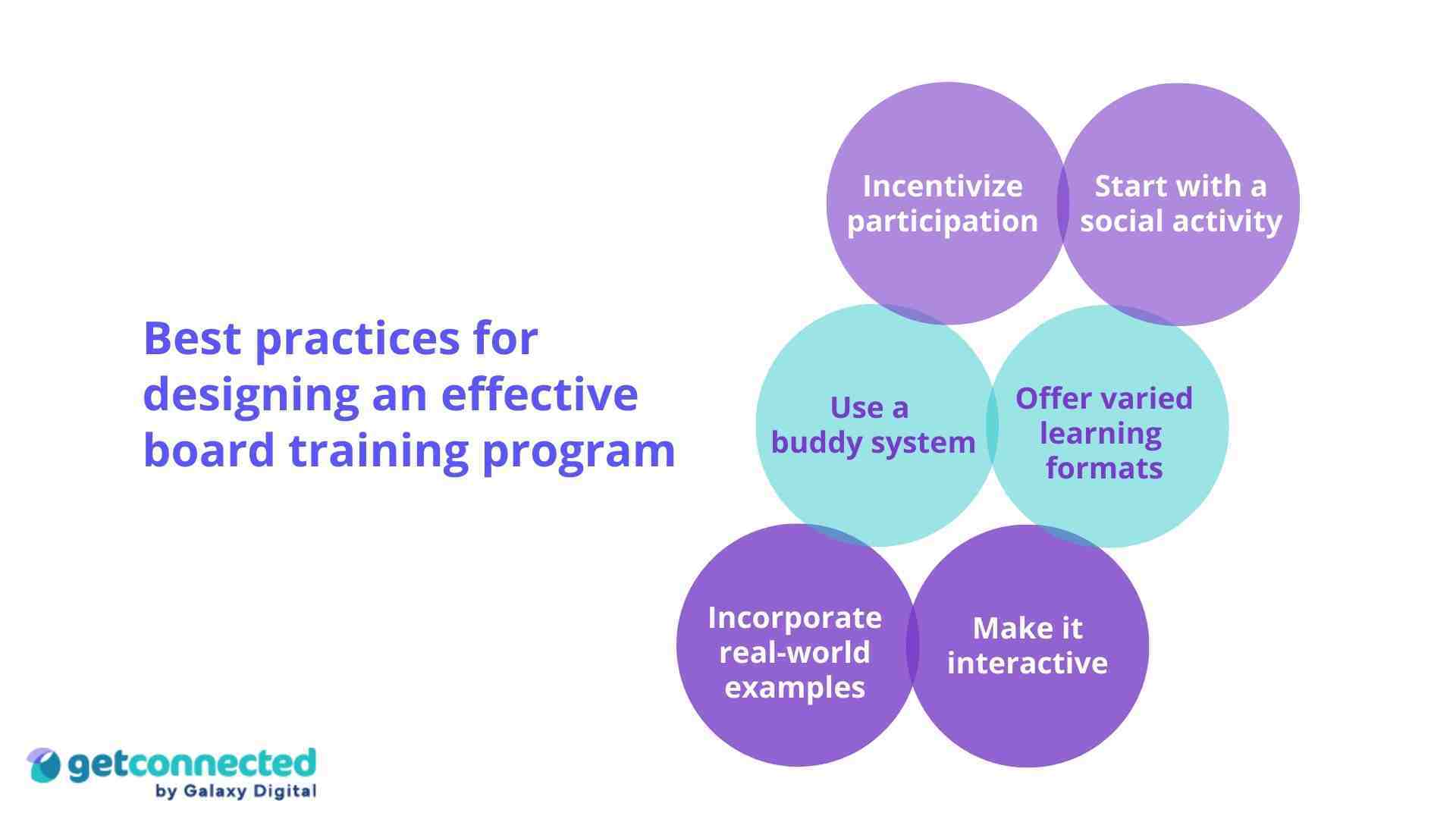50+ Free Volunteer Management Templates, Tools & Resources
Nonprofit boards are essential to guiding organizations in their high-level strategy and operations.
Despite that, a recent study shows that one-quarter of board chairs gave their board members a grade of “C” or below when it came to understanding their roles and responsibilities. Plus, only 32% of boards felt their members place a high priority on “knowledge of the community they serve.”
Those are some pretty troubling statistics.
In this blog, we’ll cover everything there is to know about nonprofit board training—including why it’s so crucial and how your nonprofit can start training your board members right away.
What is nonprofit board training?
Nonprofit board training is a structured program designed to educate and empower nonprofit organization board members. Typically, these trainings help members better understand the knowledge, skills, and tools they need to effectively fulfill their roles.
Nonprofits can train their board on practically anything, like:
- Governance
- Strategic planning
- Financial oversight
- Diversity, equity, and inclusion
- Fundraising
- And more
Why is board training important?
Board training can often feel like a burdensome task for busy nonprofits. But, without proper training, organizations are missing out on crucial influences that can help maximize impact.
In fact, without training, lots of board members themselves don’t even realize the influence they have, says The Board Pro, Christal M. Cherry.
“There are 1.3 million nonprofits in the United States—that's 1.3 million nonprofit boards. That's a lot of powerful decisions to make about millions of lives, and a lot of them don't understand that power because they haven’t been empowered themselves.”
But with effective nonprofit board training, organizations can enhance:
- Decision-making: Training ensures that board members understand their roles and responsibilities. This allows them to make informed decisions that drive the nonprofit's mission forward.
- Unity: Training helps build cohesion and trust among board members. When done well, it encourages open communication, mutual respect, and collaboration, fostering a positive board culture.
- Impact: Ultimately, board training contributes to the overall success of the nonprofit organization. Training helps the nonprofit achieve its goals, fulfill its purpose, and make a meaningful difference in the community it serves.

How to train nonprofit board members effectively
Every board—and every training program—will be different depending on your needs.
But, there are a few simple steps you can take to ensure your training is top-notch, no matter the subject:
1. Audit and evaluate your current board training practices
One of the most important steps to improving your training is to assess its effectiveness.
To evaluate your program, try collecting:
- Quantitative data: Review key performance indicators, such as board engagement, attendance, and organizational impact.
- Qualitative data: Collect feedback from participants through surveys, interviews, or focus groups to gauge satisfaction, needs, or even points of confusion. You can also use a SWOT assessment for this, too.
Based on this information, you might identify a few areas where your board needs improvement, like:
- Board teamwork and cohesion
- DEI
- Risk management
- Marketing and communications
- Recruitment
- Program oversight
2. Set clear objectives
Once you've gathered and analyzed your data, it's time to set SMART objectives for improvement:
- Specific: Define specific areas for improvement. For example, "Increase board members' understanding of financial statements."
- Measurable: Establish clear criteria to measure success. For example, "By the end of the next quarter, 90% of board members should score at least 80% on a financial literacy assessment."
- Achievable: Ensure the objectives are realistic given the resources and time available. For example, “Our board members should be proficient in reading financial statements within 6 months.”
- Relevant: Align the objectives with the nonprofit's goals and board priorities. For example, “Improving financial literacy directly supports better financial oversight, which can lead to organizational sustainability.”
- Time-bound: Set deadlines and a schedule for achieving each objective. For instance, "Implement new financial oversight training modules within the next six months."
3. Implement and monitor
Once you’ve identified your objectives, it’s time to put them into action.
Typically, this step will include:
- Assigning roles and responsibilities: Designate individuals or committees responsible for each objective to ensure accountability.
- Communicating goals: Align board members and create transparency by sharing the objectives ahead of time.
- Assessing progress: Track progress using the measurable criteria set in your objectives. For example, you might review financial literacy assessment scores and participation rates regularly and adjust where needed.

Best practices for designing an effective board training program
Let’s face it—not every board member will be excited about mandatory training.
But there are a few ways you can enhance participation, keep everyone engaged, and see real results:
- Incentivize participation: Recognize and reward board members for their participation in training. This could include certificates or public acknowledgment via social media or email newsletters.
- Start with a social activity: Before diving into the program's details, take some time to decompress and connect by offering snacks and encouraging icebreakers at the very beginning of your board meeting.
- Use a buddy system: Pairing each board member with a partner is a great way to improve engagement. As Christal says, “If you want [board members] to be authentic, you need to make [them] feel comfortable at the onset.” With a buddy system, board members can discuss training content, share insights with each other, and connect on a more personal level.
- Offer varied learning formats: Board members have diverse learning preferences and schedules. Use a mix of formats, such as workshops, webinars, and self-paced modules, so everyone can learn when and how they want to.
- Incorporate real-world examples: Real-life examples and case studies help show how the training directly relates to the board's decision-making and governance responsibilities. That’s why they should be incorporated throughout the training as often as possible.
- Make it interactive: We all know board training can be boring. Make learning as fun as you can with training sessions that are interactive like group discussions, book-club-like formats, and role-playing exercises.
Examples of nonprofit board training programs
Onboarding
- Objective: To equip new board members with the knowledge, skills, and resources needed to effectively fulfill their roles and responsibilities.
- Program material: Introduction to the organization (history, mission, programs), the outline of roles and responsibilities of board members, expectations of meetings, etc.
- Delivery methods: Workshops and presentations, practical exercises, real-life scenarios, facility tours (if applicable), and distributed handbooks.
Board governance
- Objective: To enhance board members' understanding of governance principles and best practices.
- Program material: Overview of roles and responsibilities of board members, fiduciary duties, legal and ethical considerations, board-staff relations, and effective decision-making.
- Delivery methods: Workshops, seminars, webinars, and online modules.
The Ultimate Volunteer Manager's Toolbox
Financial literacy
- Objective: To improve board members' understanding of nonprofit finance and financial management.
- Program material: Basic financial statements (income statement, balance sheet, cash flow statement), budgeting, financial oversight, fundraising strategies, and financial sustainability.
- Delivery methods: In-person workshops with financial experts, interactive presentations, and hands-on exercises.
Diversity, equity, and inclusion (DEI)
- Objective: To promote diversity, equity, and inclusion within the board and organization.
- Program material: Detailed understanding of diversity, equity, and inclusion, identifying and addressing unconscious bias, creating inclusive board practices and policies, and advancing DEI goals.
- Delivery methods: Workshops, in-person discussions, guest speakers, and learning activities.
Nonprofit board training and beyond
Nonprofit board training benefits everyone—your staff, board members, and even your beneficiaries. And with the right strategies and tools, training can be more effective (and even fun) than ever before.





